Related Research Articles
Waipukurau is the largest town in the Central Hawke's Bay District on the east coast of the North Island of New Zealand. It is located on the banks of the Tukituki River, 7 kilometres south of Waipawa and 50 kilometres southwest of Hastings.
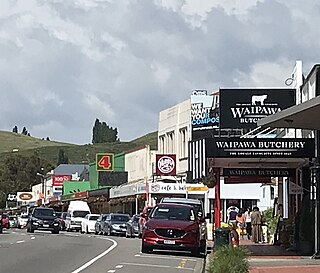
Waipawa is the second-largest town in Central Hawke's Bay in the east of the North Island of New Zealand. It has a population of 2,360. At the 2013 census, it had a population of 1,965, a change of 2.2 percent from the 2006 census.
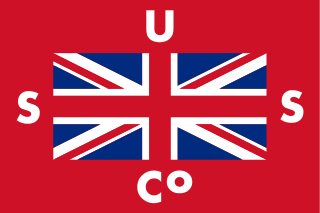
Union Steam Ship Company of New Zealand Limited —when there was no chance of confusion casually referred to as Union, Union Company, Union Steam Ship Company, or Union Line— was once the biggest shipping line in the southern hemisphere and New Zealand's largest private-sector employer. It was incorporated by James Mills in Dunedin in 1875 with the backing of a Scottish shipbuilder, Peter Denny. Bought by shipping giant P & O around the time of the First World War it was sold in 1972 to an Australasian consortium and closed at the end of the twentieth century.
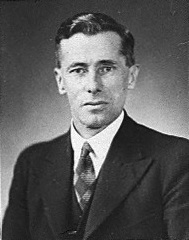
Robert Coulter was a New Zealand politician of the Labour Party.

William Cowper Smith was a Liberal Party Member of Parliament in New Zealand.
Hautere railway station was a flag station on the North Island Main Trunk in New Zealand.

Longburn railway station was a station in Longburn, on the North Island Main Trunk in New Zealand. The platform, which is across from the Fonterra Factory, remains but the structure has been demolished.
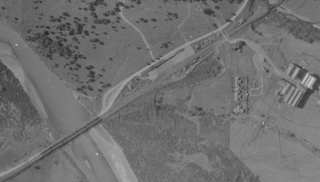
Kakariki railway station was a station on the North Island Main Trunk and in the Manawatū-Whanganui region of New Zealand.
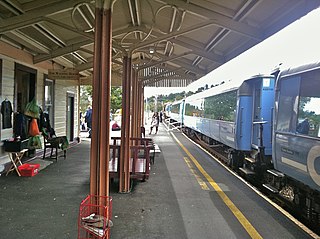
Ohakune railway station is a station on the North Island Main Trunk (NIMT), it served the town of Ohakune in the Manawatū-Whanganui region of New Zealand. It was called Ohakune Junction from 10 August 1926 until Raetihi Branch closed in 1968, to avoid confusion with Ohakune Town station on that branch. It was the second highest operating railway station in New Zealand, after National Park.
Novelty was a barque-rigged iron paddle steamer, built at Sydney in 1863.
William and John was a New Zealand cutter of 10 tons.

SS Hilonian was a general passenger and cargo steamer, built as the Triumph in 1880 at Middlesbrough for McIntyre & Co, and later fitted with refrigeration equipment and leased to Shaw Savill and the New Zealand Shipping Company. She sank and ran aground many times, the final sinking being by torpedo in 1917.
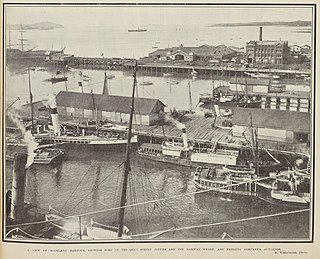
SS Rotomahana was an 1876 harbour steamer and the first iron vessel to be built in Auckland, though launched only 28 minutes ahead of another, though smaller, iron ship. Rotomahana was a name used by at least two other ships of the era, presumably because Rotomahana and its Pink and White Terraces had become better known after the Duke of Edinburgh visited in 1870.

Phoenix Foundry, often printed as Phœnix, was an engineering company in Auckland from 1861 to 1952. By 1900 it was on the verge of bankruptcy, but also Auckland's largest engineering works, supplying a wide range of goods and often leading in the design of equipment used to exploit the country's resources, such as timber and flax mills, crushers for gold ore and locomotives, pumps, cement and gas works and steamers. The foundry started with engineer, George Fraser, and a handful of employees, but grew to employ hundreds and operated under several names, including Fraser and Tinne and George Fraser & Sons Ltd.

PS Governor Wynyard, was a small steam ship, the first to be built in New Zealand, and was launched in 1851. She was a paddle steamer schooner, built of pohutukawa, with kauri planks. In 1853 she left her Tamaki River service in Auckland and was sold in Melbourne in 1852 during the gold rush, but was soon serving as a ferry in Tasmania, until she had her primitive engines removed in 1858. She sprang a leak and became a beached wreck in 1873.
SS Tauranga was the first coastal trading steam ship to be built in New Zealand, though a harbour steamer, Governor Wynyard, had been built at Auckland in 1851.
Dolphin was a New Zealand cutter of 10 tons.

Isaac Coates was mayor of Hamilton from 1888 to 1892, a farmer, flax-miller, and a drainage and railway contractor.

Opapa railway station is a preserved station, probably dating from 1896, on the Palmerston North–Gisborne Line in Hastings District of Hawke's Bay, 23.56 km (14.64 mi) south of Hastings in New Zealand's North Island. Although it closed in 1981 and is now in a meshblock with a 2018 population of only 222, Te Aute is unusual in 3 respects:

Karewa, is a small, 3.57 ha, predator free wildlife sanctuary in the Bay of Plenty. It is about 6 km (3.7 mi) off Matakana Island and administered by the Department of Conservation (DoC), with Ngāti Ranginui. Its main species are tuatara and flesh-footed shearwaters. A legend of Taurikura relates how the tuatara on Karewa are descended from a chief's errant daughter.
References
- 1 2 3 Ingram & Wheatley, C.W. & P.O. (2007). New Zealand Shipwrecks. Auckland: Hodder Moa. p. 53. ISBN 978-1-86971-093-4.
- ↑ "NEW ZEALAND SPECTATOR AND COOK'S STRAIT GUARDIAN, VOLUME VI, ISSUE 455, 12 DECEMBER 1849". paperspast.natlib.govt.nz. Retrieved 8 May 2020.
{{cite web}}: CS1 maint: url-status (link) - ↑ "WELLINGTON INDEPENDENT, VOLUME V, ISSUE 461, 13 MARCH 1850". paperspast.natlib.govt.nz. Retrieved 8 May 2020.
{{cite web}}: CS1 maint: url-status (link) - ↑ "WELLINGTON INDEPENDENT, VOLUME VI, ISSUE 553, 29 JANUARY 1851". paperspast.natlib.govt.nz. Retrieved 8 May 2020.
{{cite web}}: CS1 maint: url-status (link) - ↑ "OTAGO WITNESS, ISSUE 1, 8 FEBRUARY 1851". paperspast.natlib.govt.nz. Retrieved 8 May 2020.
{{cite web}}: CS1 maint: url-status (link) - ↑ "DAILY SOUTHERN CROSS, VOLUME VI, ISSUE 430, 12 AUGUST 1851". paperspast.natlib.govt.nz. Retrieved 8 May 2020.
{{cite web}}: CS1 maint: url-status (link) - ↑ "LYTTELTON TIMES, VOLUME I, ISSUE 27, 12 JULY 1851". paperspast.natlib.govt.nz. Retrieved 8 May 2020.
{{cite web}}: CS1 maint: url-status (link) - ↑ "LYTTELTON TIMES, VOLUME I, ISSUE 51, 27 DECEMBER 1851". paperspast.natlib.govt.nz. Retrieved 8 May 2020.
{{cite web}}: CS1 maint: url-status (link) - ↑ "LYTTELTON TIMES, VOLUME II, ISSUE 60, 28 FEBRUARY 1852". paperspast.natlib.govt.nz. Retrieved 8 May 2020.
{{cite web}}: CS1 maint: url-status (link)